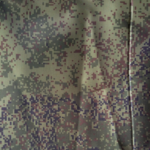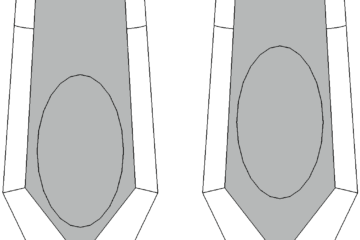I will be offering high strength 210D nylon-66 with a thin polyurethane (PU) coating on one side and a thicker, heat sealable polyurethane (TPU) coating on the other side (see Fabrics for definitions), and also a lighter weight 40D (320T) nylon-66, also with TPU and PU coatings.
Nylon-66 is the stronger form of nylon, used in things like parachutes, airbags, and military applications, and it has a significantly higher melting point than regular nylon-6, so you are much less likely to damage it with a heat sealing iron.
I haven’t figured out exact prices yet, but they will be lower than the alternative fabrics available elsewhere (even though there are no other fabrics as good as this available anywhere online).
As I’ve written before, I’m in this for the fun of it, not to get rich, so offering the highest quality products at the lowest price will always be my top priority.
If you would like to be notified when fabrics are available, please use the Contact form to send me a message with “Mailing List” in the subject line.
These are some fabrics that you can purchase elsewhere (if you know of others, please leave a comment below!):
North America:
Europe:
*I have not personally tested these fabrics, but based on the product descriptions, it appears they will work.






14 Comments
Nick · October 22, 2016 at 3:46 am
Do you have any plans to make a green fabric available similar to the “cedar green” Alpacka use?
Matt (Admin) · October 22, 2016 at 8:40 am
Hi Nick,
I will offer more colours in the future, but the timing will depend on how quickly my current stock of fabric declines – the earliest possible date would be in several months.
Nick · November 22, 2016 at 2:28 am
I hope they are selling well for you 🙂
Ben · August 11, 2016 at 8:08 pm
Hi Matt,
Will you be taking orders for your fabric soon? Also, when do you return from vacation?
Cheers,
Ben.
Matt (Admin) · August 11, 2016 at 11:01 pm
There was a short delay at the factory, but fabrics should arrive in Canada on the 26th and I’ll be shipping soon thereafter!
I’ll be home later this weekend 🙂
Gerrit · July 13, 2016 at 6:17 am
What about this fabric? http://www.extremtextil.de/catalog/Nylon-70den-einseitig-TPU-beschichtet-170g-qm-schwei%DFbar::1707.html
I think it should be similar to the 30 D Ripstop from Seattle fabric. Personally i built a bivy sack and sealed it with “itself” 😀
Matt (Admin) · July 13, 2016 at 6:27 pm
Cool, did you like working with it?
Giovanni · June 29, 2016 at 9:08 am
I asked extremtextil for infos about this fabric too: http://www.extremtextil.de/catalog/Ripstop-Nylon-TPU-coated-heatweldable-200g-sqm::1636.html. Theye didn’t gave me much information on it, but instead, as I’ve specified the purpose (packraft) I wanted to use it for, they suggested the 210 D Oxford. I will be making one soon enough and I’ll update on the quality of the fabrics.
Matt (Admin) · June 29, 2016 at 9:13 am
Thanks, Giovanni – please do share your thoughts when your fabric arrives.
Giovanni · July 18, 2016 at 5:10 am
Fabrics just came in today. Your plans arrived even earlier than expected (less than two weeks, and I am not even in living in some central area of Italy). They seem a little too thin to my newbie eye. Is there a minimum thickness for the TPU coating needed to withstand airpressure? On http://www.extremtextil.de/catalog/advanced_search_result.php?keywords=tpu+film&x=0&y=0 I saw they offer two kind of tpu film 0,06mm (80g/sq) and 0,3mm (340g/sq) . I don’t know if that is the film they apply to the fabric, but I wanted to ask them before start cutting and sealing for the packraft! Would it be good if the tpu was 0,06 or 0,3 mm ?
Matt (Admin) · July 18, 2016 at 8:13 am
I’m glad the plans arrived quickly!
I have tried fabrics with TPU coatings between 0.04 mm and 0.15 mm, and all have held air, but the ideal thickness will depend on the denier and thread count of the fabric; 0.06 would feel thin and 0.3 mm would feel very thick and heavy. Based on the advertised weight of that 210D nylon+TPU from ExtrimTextil, I estimate the TPU thickness to be 0.10-0.13 mm, which should be good. Before starting your packraft, however, try folding a small piece in half, TPU side to TPU side, and seal around the edges to create an air bubble. Then try squeezing the air bubble to make sure the fabric is airtight – you can place something heavy on top of it and leave it for a few hours to be sure no air escapes.
Giovanni · July 20, 2016 at 11:39 am
Thanks. What I ended up doing was a kind of a pocket (only three sides sealed) in which I blow some air with an air-compressor gun. The air doesn’t come out from the sealing or the fabric, only from where I put in the gun. I’ve cut too small of a piece of fabric to make the bubble you suggested but it seems good to me.
Steve S · June 28, 2016 at 2:35 pm
Your original raft, with a 3 oz per square yard (osy) fabric, weighed 1.79 pounds.
The yellow raft weighed 1.41 pounds — a lighter fabric.
The new fabric is about 6 osy implying a 3.5 pound boat.
The yellow fabric sounds more interesting — maybe with the heavier fabric for the floor. Are you planning to offer the lighter fabric or something similarly light?
Matt (Admin) · June 29, 2016 at 9:09 am
Hi Steve,
I am planning to offer a lighter fabric, and a heavier one as well at some point down the road (for even tougher floors). I may be able to get the lighter fabric with the first shipment, but I’m not sure yet. I will update this post with new details as they come.
Cheers!